EdChoice Public Opinion Tracker: Top Takeaways April 2022
It’s been just over two years since schools across the country first closed their doors in response to the COVID-19 pandemic. Few parents or educators knew what to expect at that time and no one could anticipate how long the virus would impact our school system.
Are we finally back to normal?
While it’s tough to identify what “back to normal” means anymore, much less if we’ve arrived there, our monthly public opinion tracker does suggest that most Americans have put COVID-19 in the back of their minds. Relatively few people find it disruptive, and most parents aren’t factoring it into their educational choices for their children. This is one of the findings of our latest wave of our Monthly Public Opinion Tracker, a survey of a nationally representative sample of adults 18 years and older (N = 2,200, in the field April 21-23). With additional sampling, we obtained responses from a total of 1,119 parents of school-aged children. Here are six additional key findings:
1. There is no consensus about what stakeholders should have the most power in approving or rejecting charter schools within a particular area. We asked all respondents, including parents, to name what stakeholder should have some degree of influence regarding the opening or operating of charter schools in a given area. Then, we followed up with a second question asking which stakeholder should have the most power approving or rejecting a charter school. No stakeholder received majority support. Both school parents and the general public cited most frequently “students’ parents” and “school district” among those who they feel should have influence and the most power in the process, but state government and independent chartering boards also received substantial vote shares.
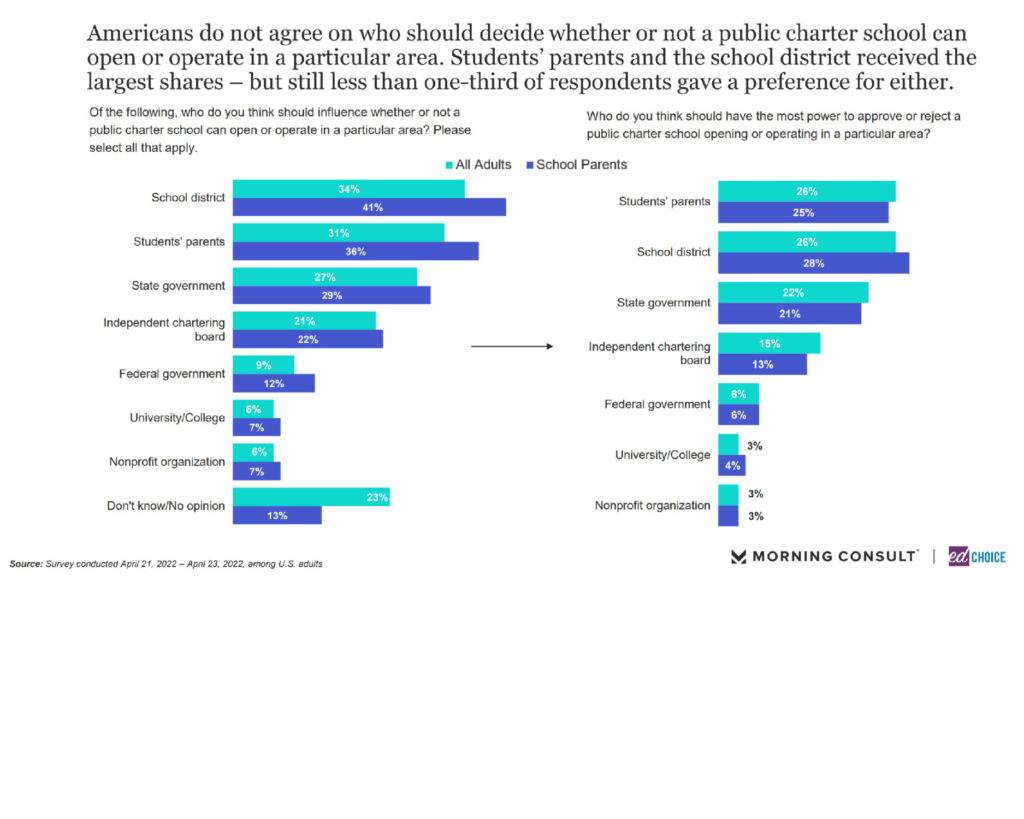
2. Interest in learning pods jumped to 34 percent in April. After two consecutive months with the lowest rates of interest in learning pods since the pandemic began, interest levels climbed to 34 percent in April. April numbers are comparable to interest levels seen in the early months of the 2021-22 school year. Black parents are the group most likely to be interested in learning pods, followed by parents of children currently attending private school and parents in urban areas.
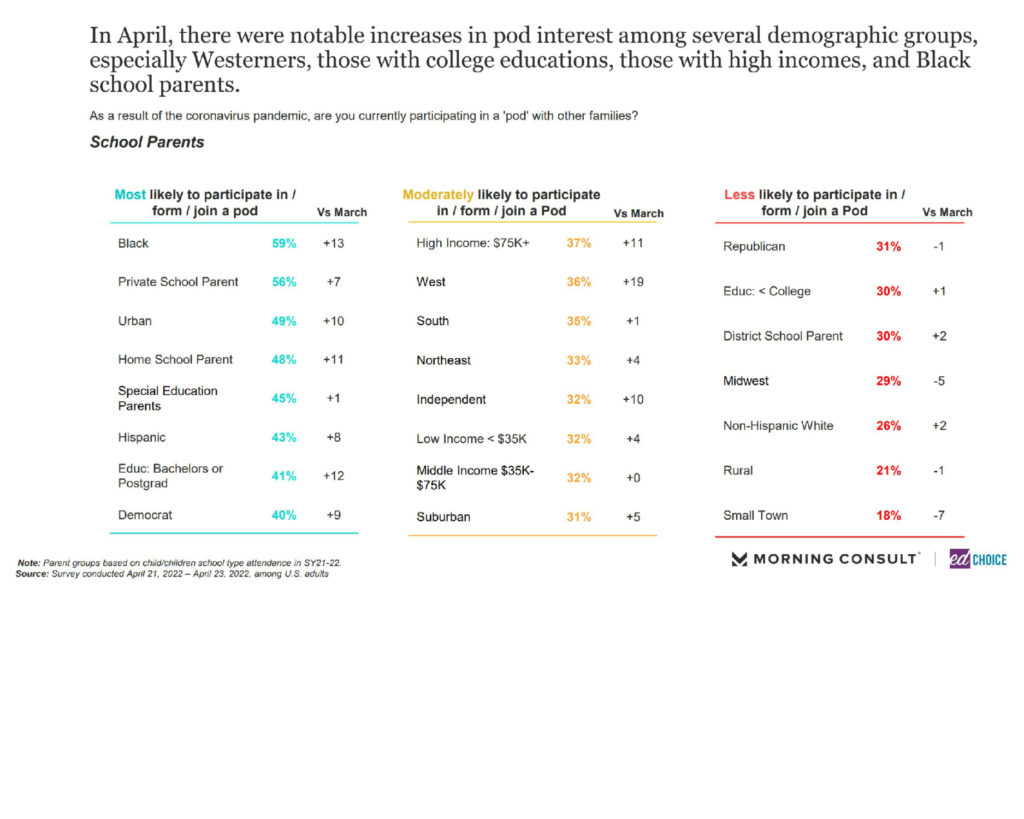
Among parents utilizing learning pods, the two most common reasons for participating are rather oppositional. The most common reason participating parents gave for joining a pod was providing an educational environment without COVID-19 restrictions, and they were followed closely by parents who joined because of COVID-19 concerns. Those interested in joining learning pods were relatively less focused on the pandemic. Interested parents were more likely to mention small groups and socialization opportunities. Just under one-fifth of interested parents mentioned a desire to help their child catch up academically after the pandemic.
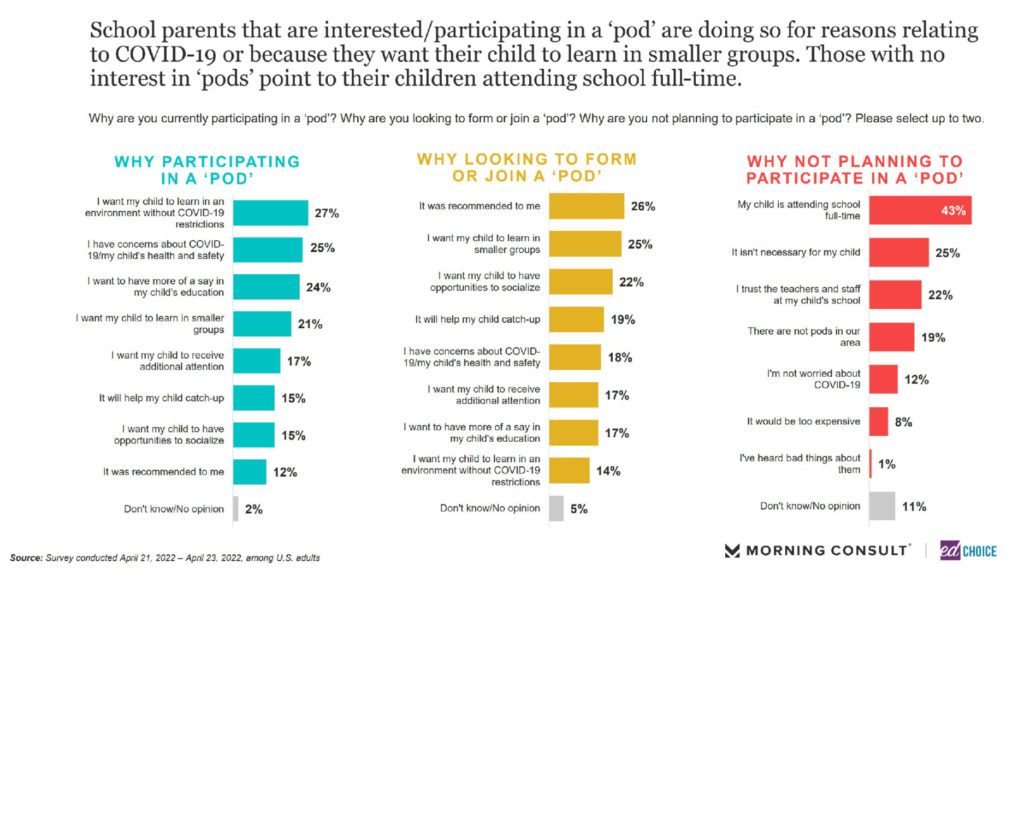
3. Education issues continue to constitute the third-most important political topic at state and local levels. In our survey, we present respondents with seven policy areas and ask them to name the three they deem most important when considering their vote for state, local, and federal offices. Once again, economic issues are the clear favorite, with well over half of adults listing the topic in their top three. Notably, when considering state and local elections, economic issues have become an even more important issue than they were in March. Education was the third most important policy area when considering state and local elections. By contrast, respondents saw education as an issue area of relatively low importance for federal offices. Across all three levels of government, the share of people who named education issues in their top three areas increased by three percentage points.
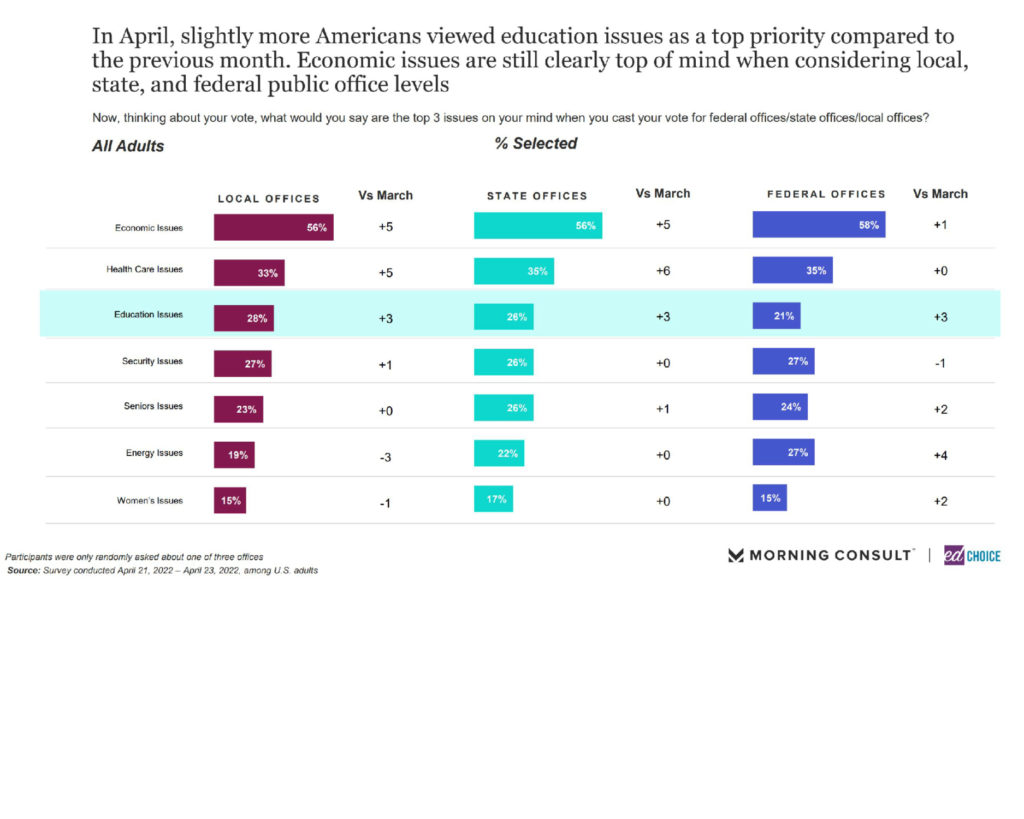
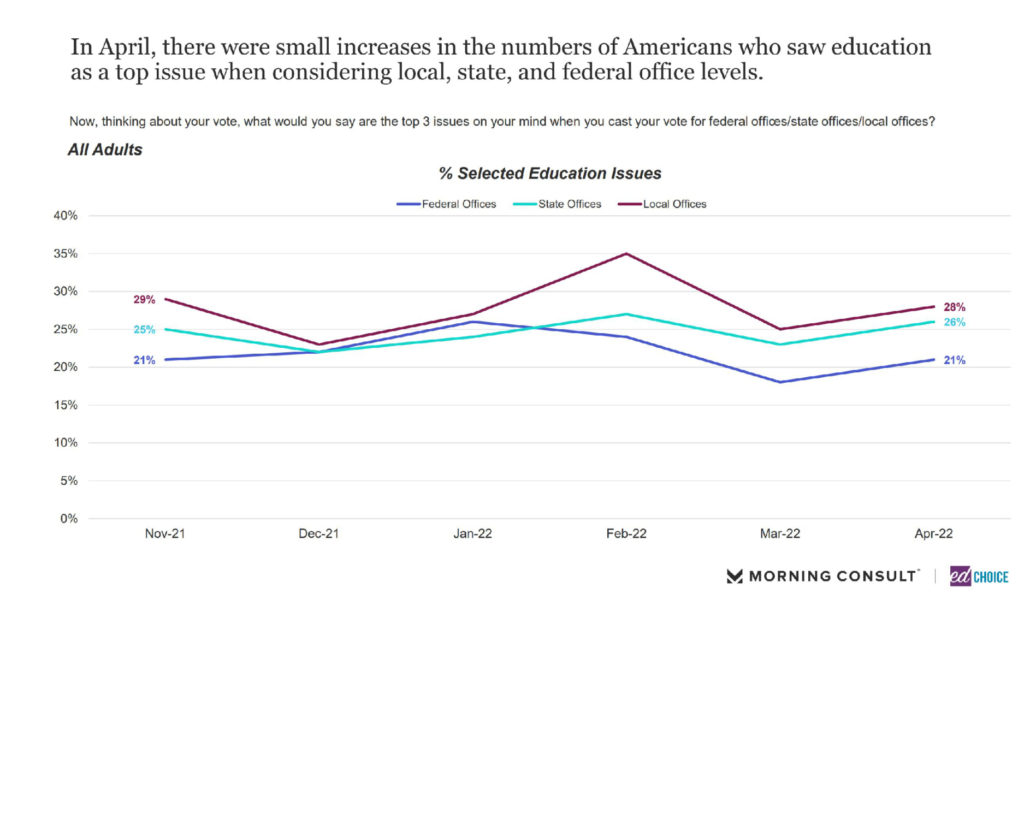
4. Most parents want education options besides full-time in-person schooling. Since the beginning of the pandemic, about three-quarters of parents have thought schools should provide multiple learning options and not restrict themselves to one approach. This month, that share reached 78 percent of parents.
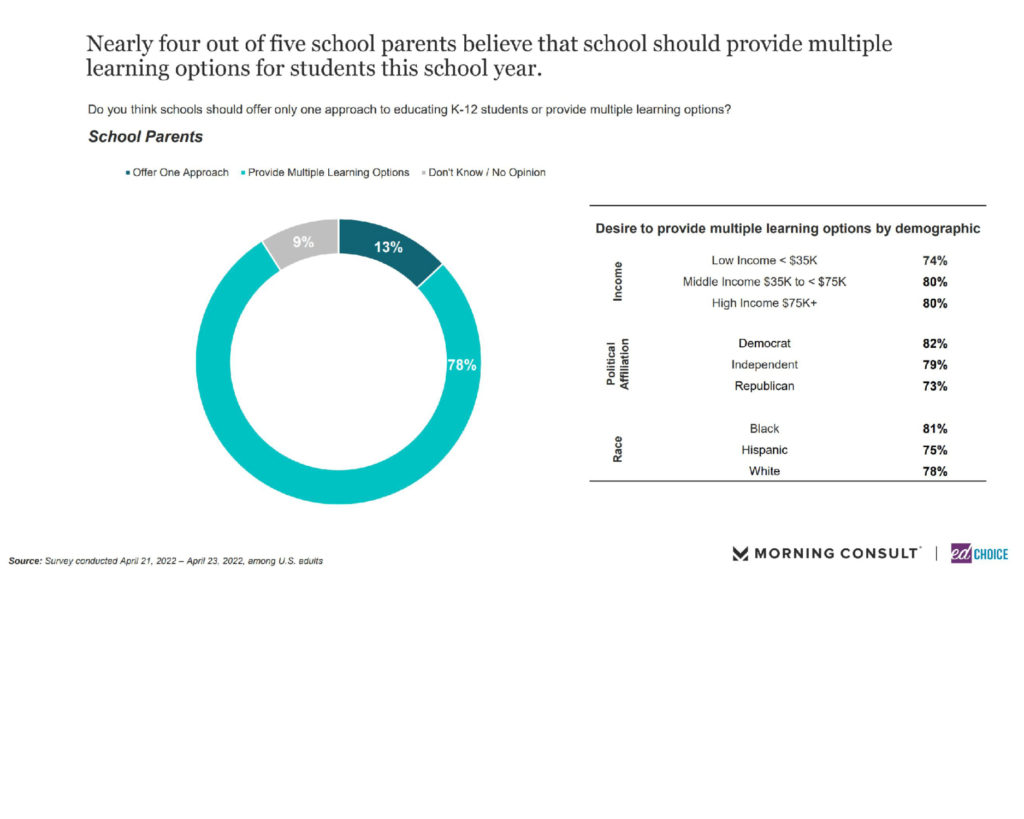
Additionally, more than half (58 percent) of parents indicated their ideal school week would involve at least one day of schooling at home. This result also is consistent with trends we have seen since the pandemic. We ask parents to consider their preferred situation after the pandemic, and 55 to 60 percent of parents generally have preferred at least one day of schooling at home through the pandemic’s highs and lows. Likewise, results for this question have changed only marginally from the March wave.
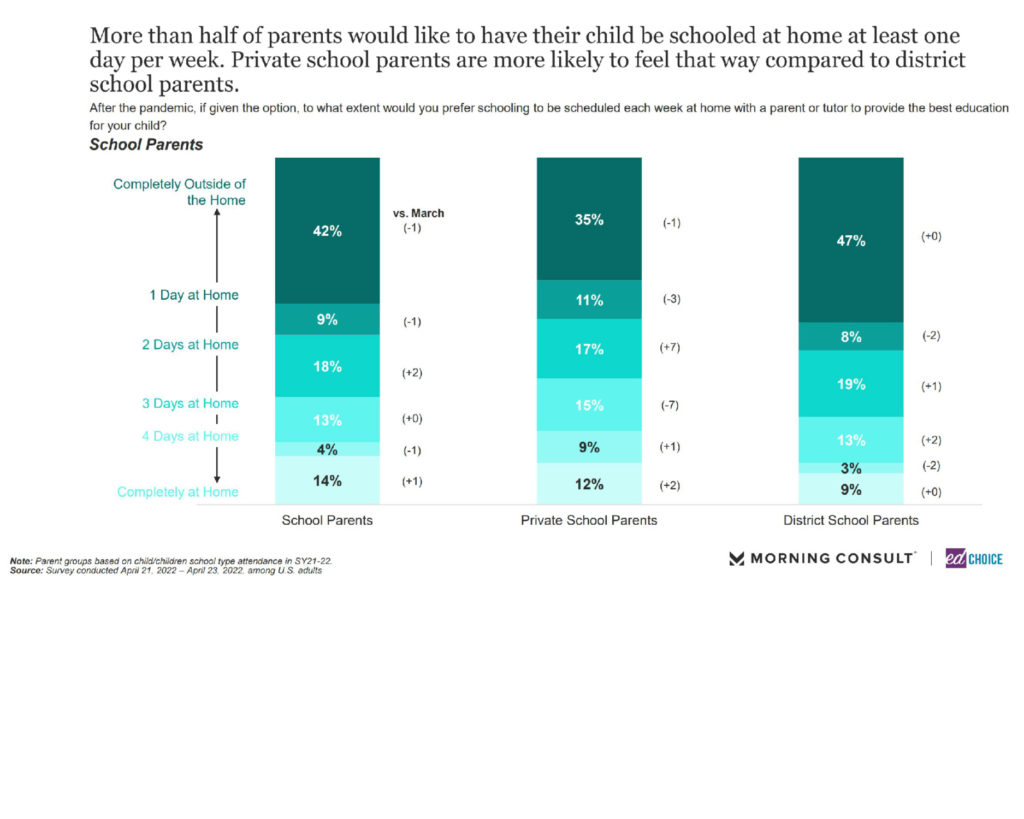
5. Support for educational choice policies remains high. In April, we saw very little change on the set of school choice policy questions we ask every month. Among four of the five school choice policies—education savings accounts (ESAs), school vouchers, charter schools, intra-district open enrollment, and inter-district open enrollment—the share of adults in support of the policies changed no more than a percentage point compared to March. The single exception was inter-district open enrollment, which saw a four-point rise in total support. Once again, parents were particularly supportive of each school choice policy. Democrats remain the most supportive group of ESAs (besides noted parent subgroups), while Hispanics and Republicans lead support for school vouchers. Urban respondents were especially high supporters of intra- and inter-district open enrollment.
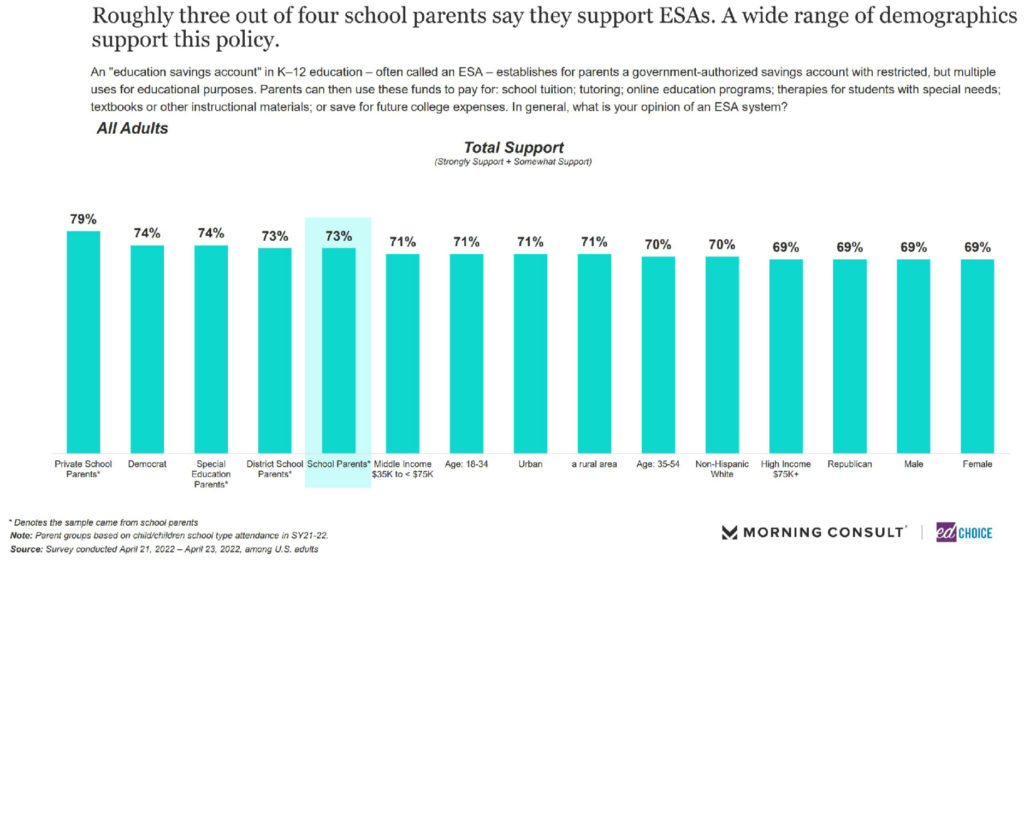
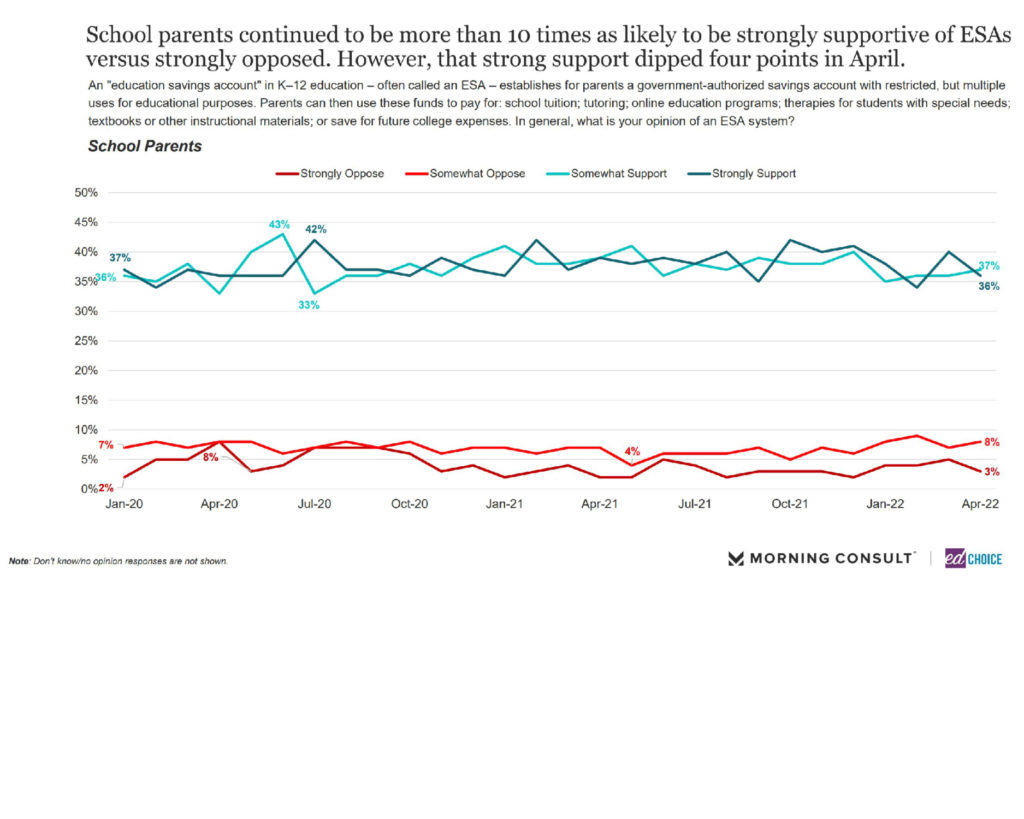
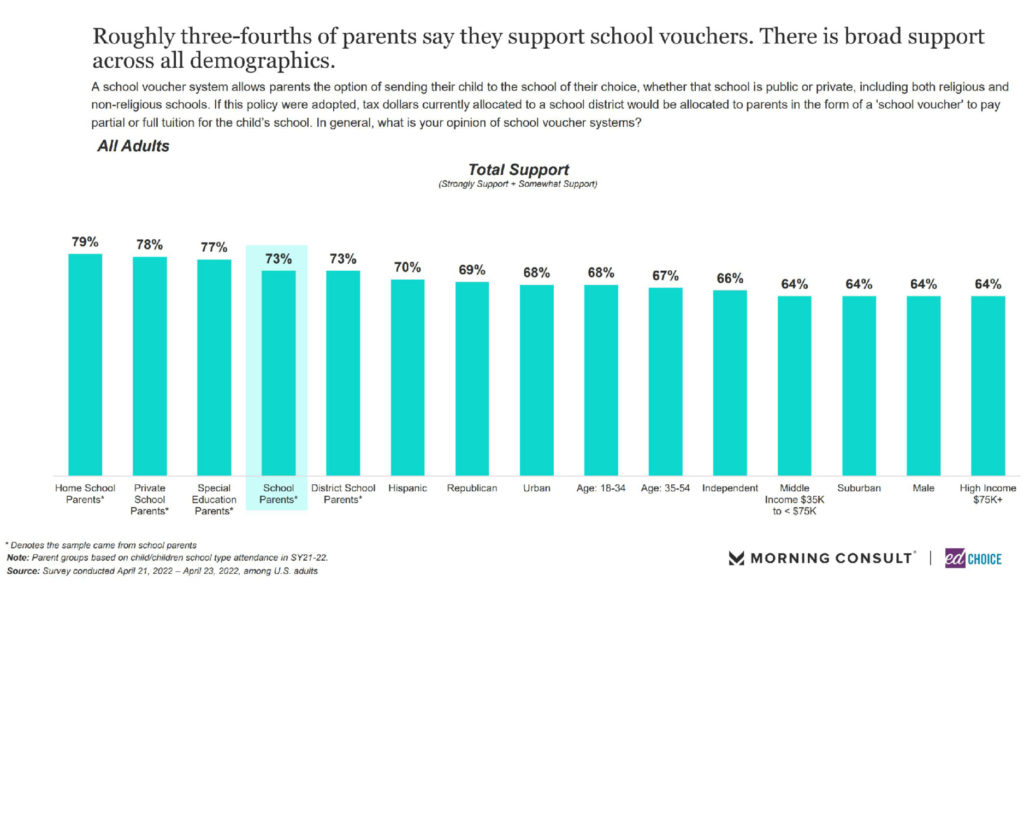
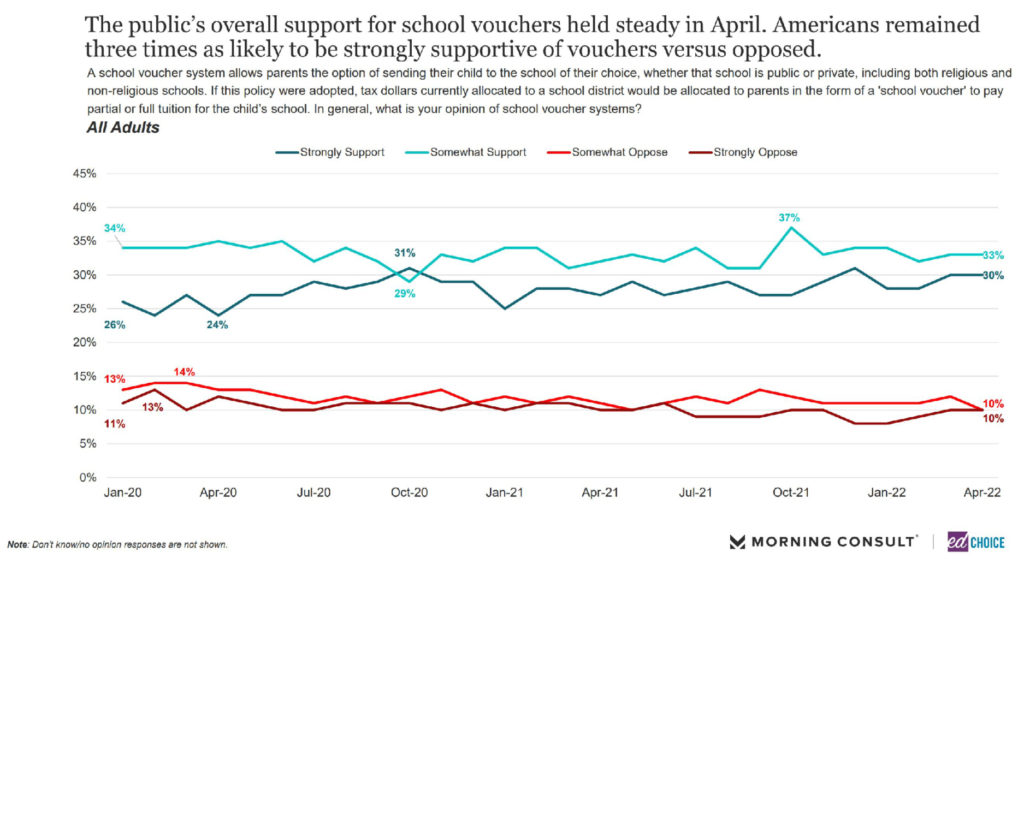
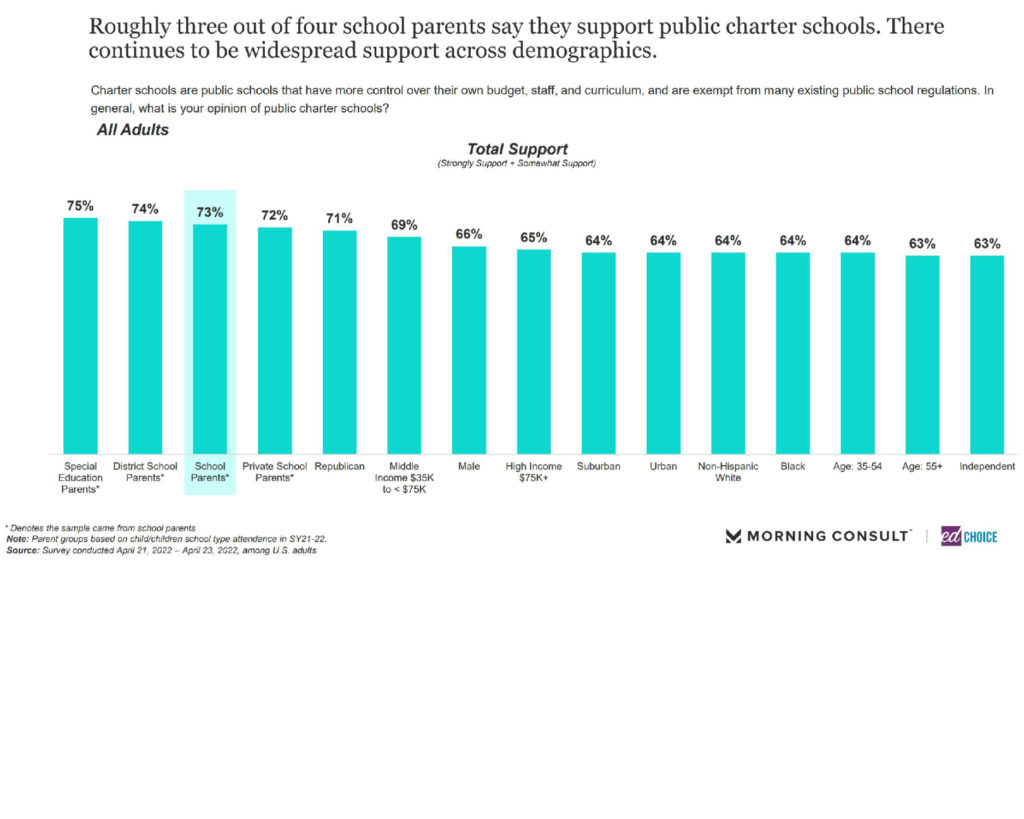
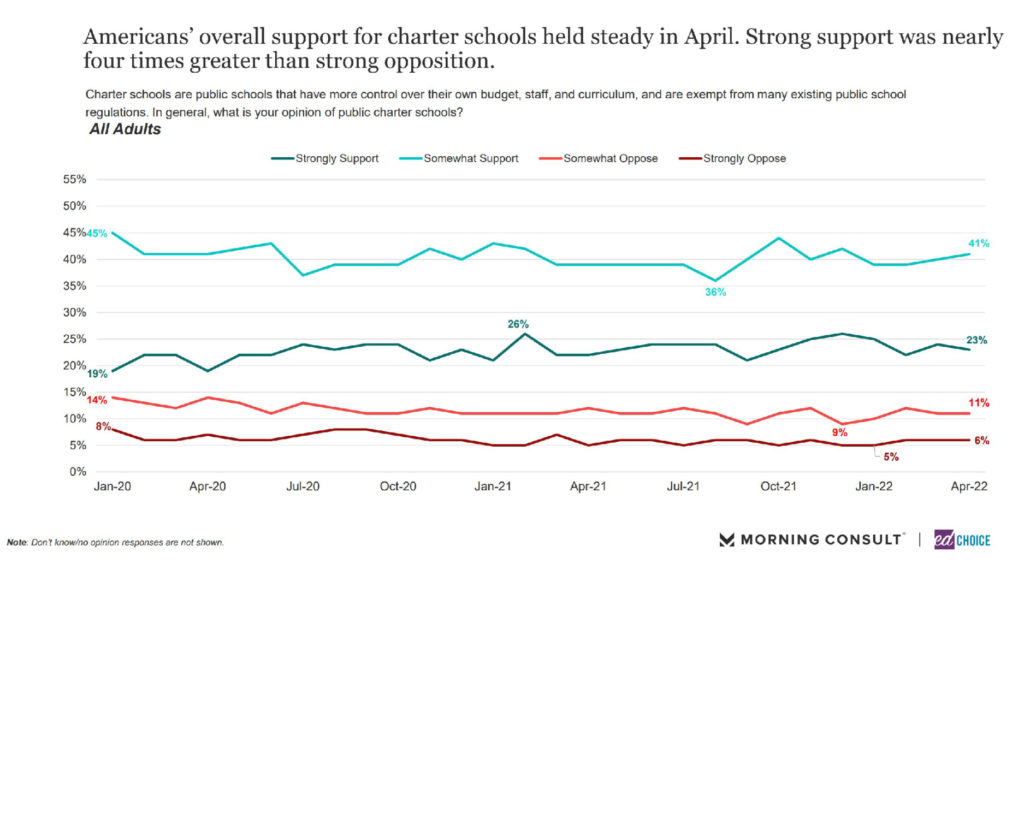
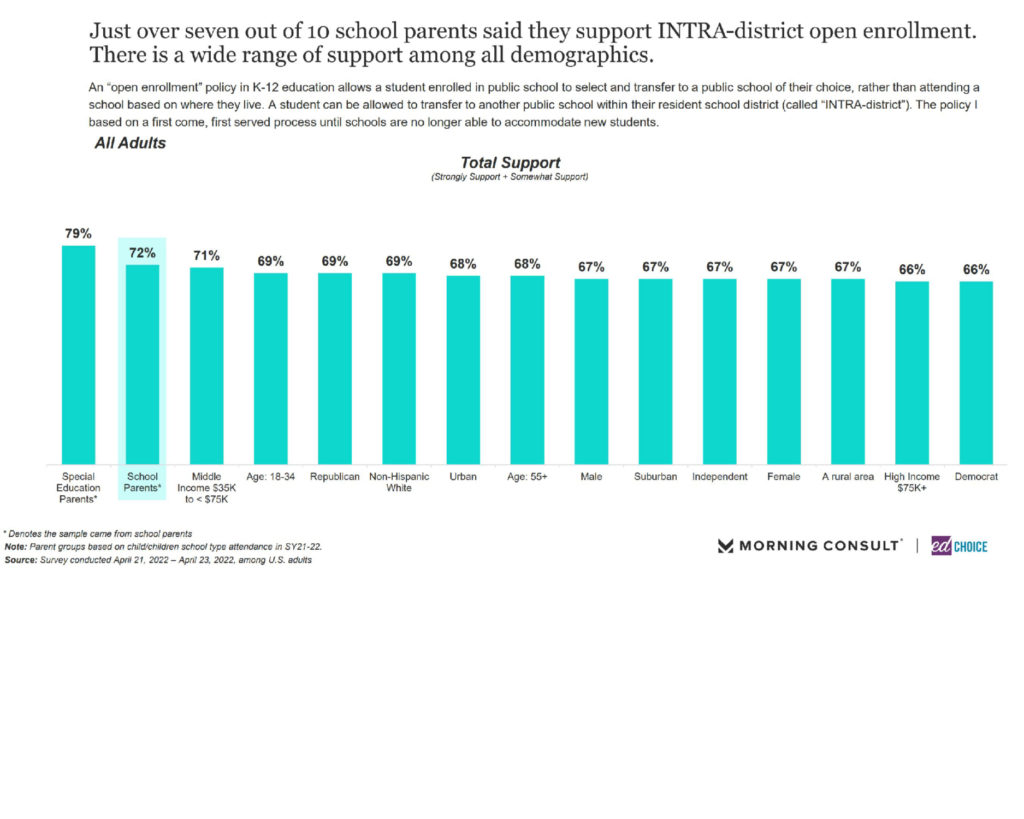
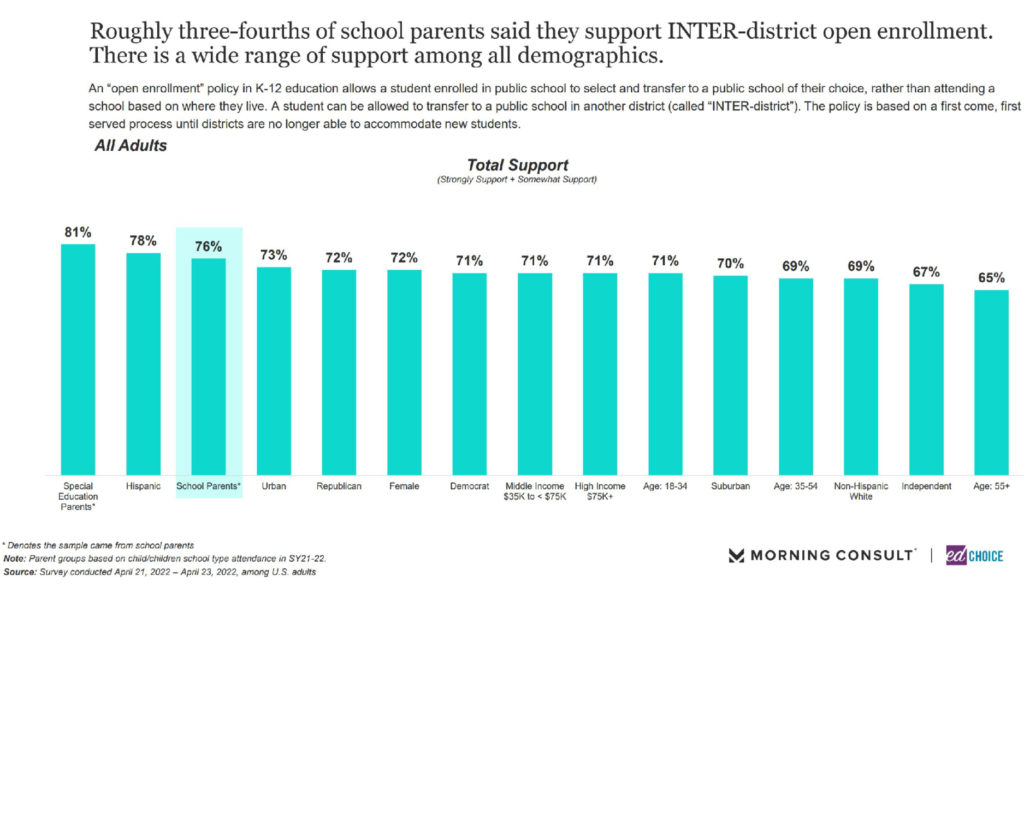
6. Perceptions about COVID-19’s impact on K-12 education held fairly steady. In March, we observed a general trend toward the American populace moving past the pandemic, at least as a phenomenon dominating our collective psyche. The indicators remained fairly consistent in April. Eighty-four percent of parents stated that they were comfortable sending their child back to the classroom, a slight increase from March. The share of adults indicating the pandemic was “very disruptive” to their lives remained within a couple percentage points of March’s totals. Ratings of various institutions’ handling of COVID-19 also remained essentially unchanged across the board.
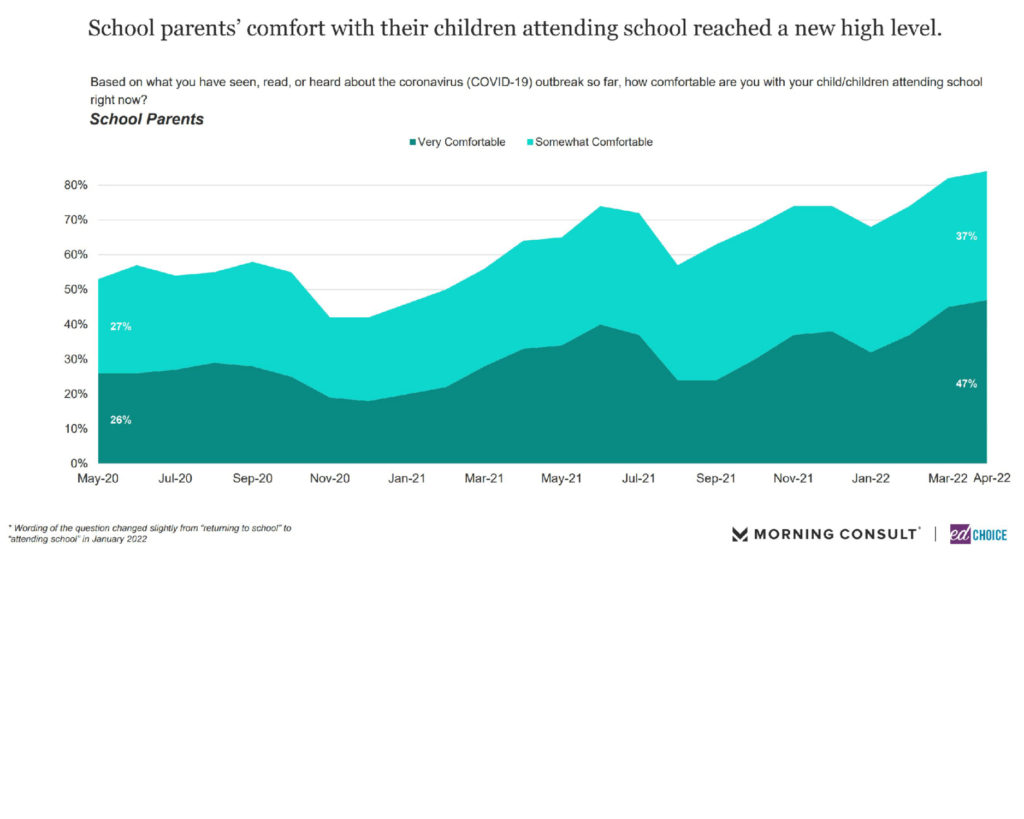
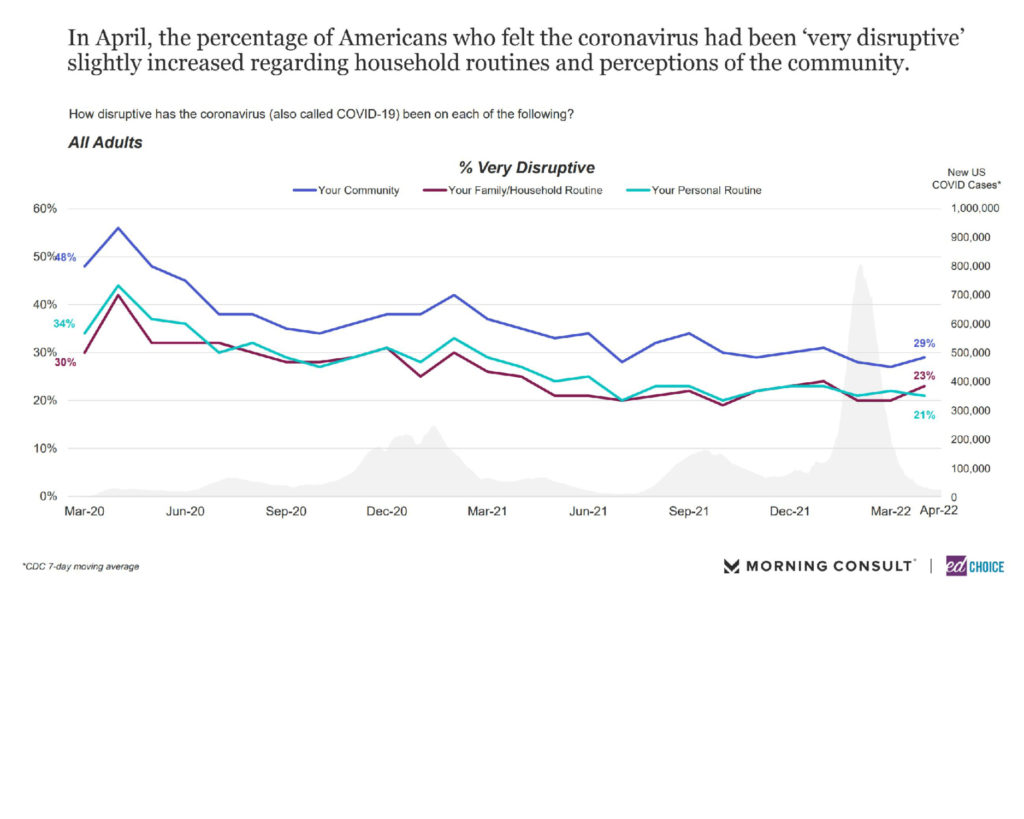
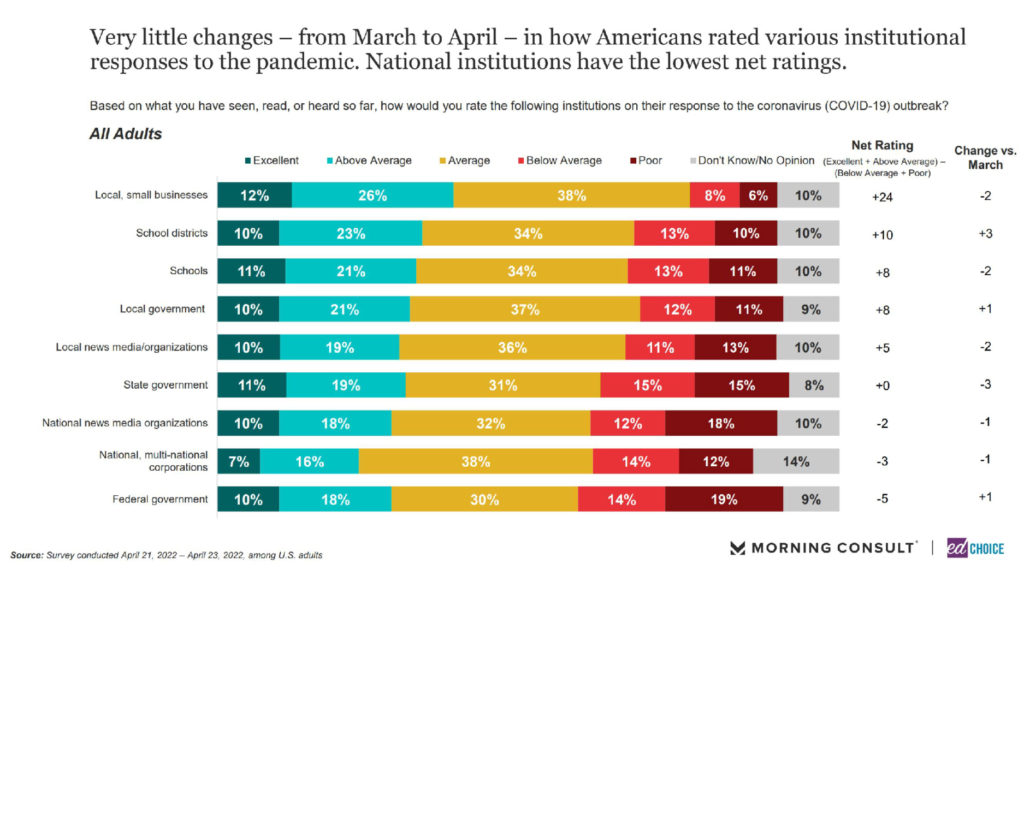
7. Favor toward homeschooling remains exceptionally higher than opposition. Since the pandemic began, we have asked parents whether their perspective on homeschooling had changed because of COVID-19. For the first year of the pandemic, favor oscillated significantly as people had varying experiences traditional schools, remote learning, and the pandemic itself, though it always remained much higher than opposition. Over the last year, the share of parents who say they have grown more favorable toward homeschooling post-pandemic has stabilized somewhat. This month, two-thirds of parents said they had grown more favorable toward homeschooling compared to just 18 percent who said they had grown less favorable.
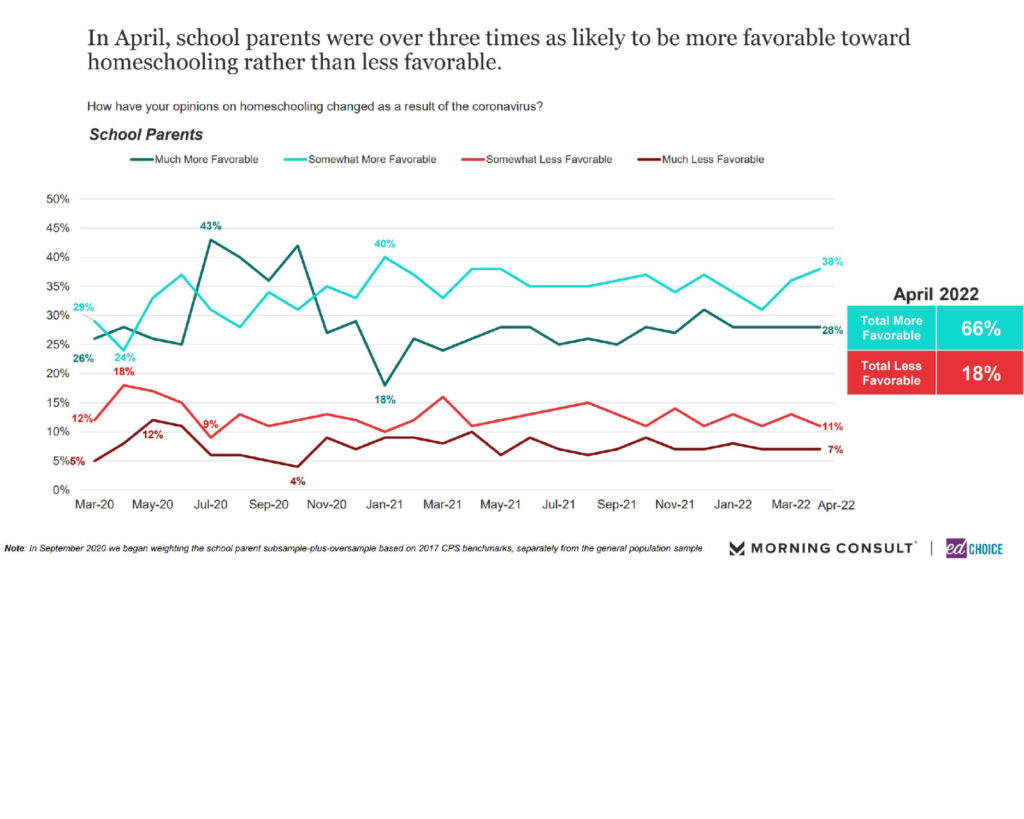
8. Private school parents continue to be the most positive about their children’s development. At least 43 percent of private school parents felt their child has progressed “very well” academically, emotionally, and socially this school year. This share is substantially higher than that of district school parents or homeschool parents.
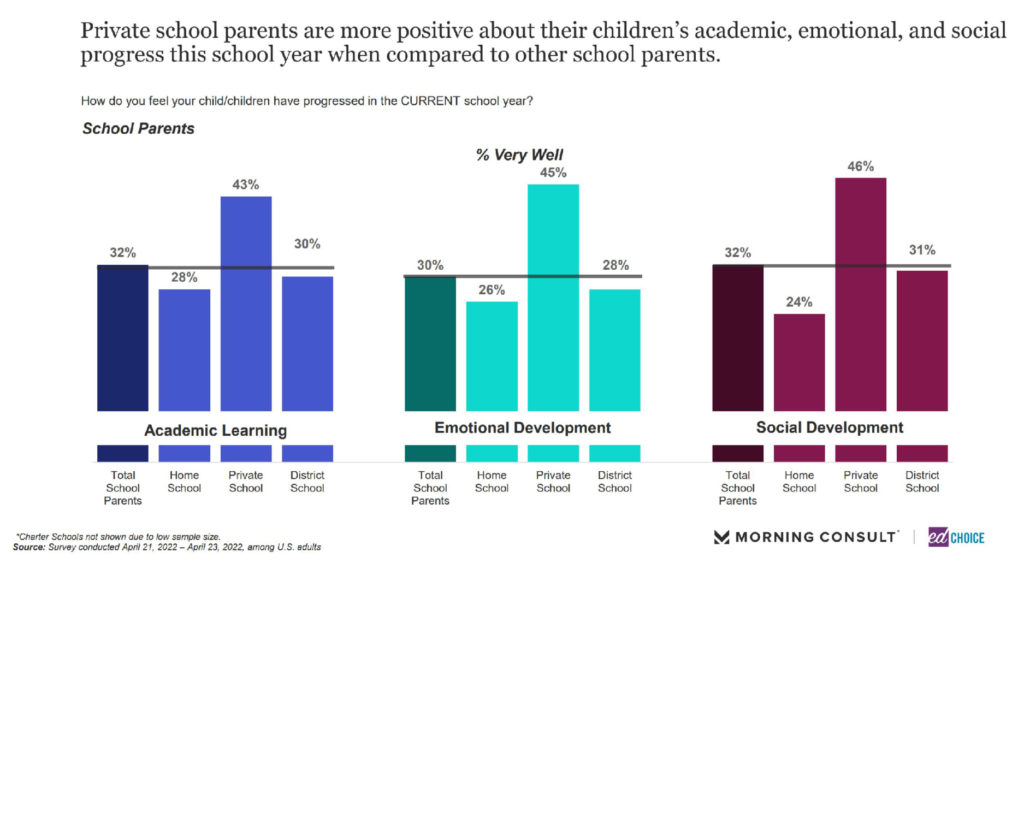
9. Parents feel somewhat more optimistic about K-12 education. Each month from November to March, both parents and the general population were less likely to say K-12 education was heading in the right direction on the local, state, and national levels. In April, the decline ceased. Optimism about K-12 education held steady for all adults, while parents saw a jump in positivity, especially at state and local levels.
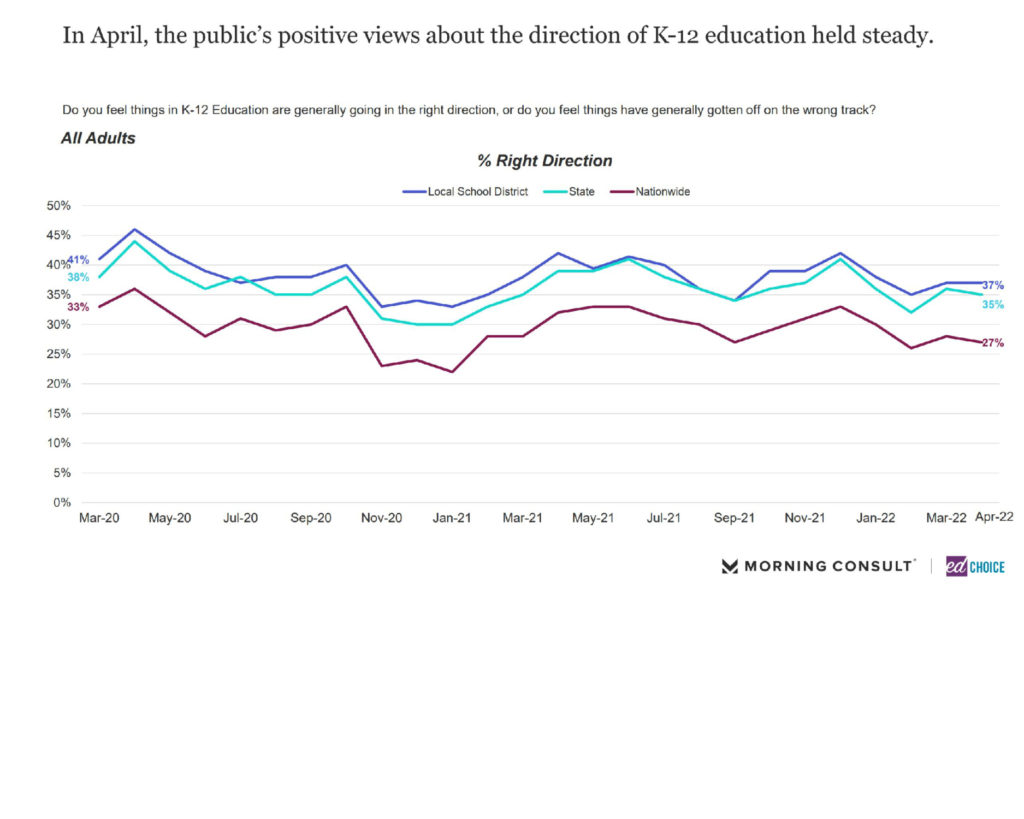
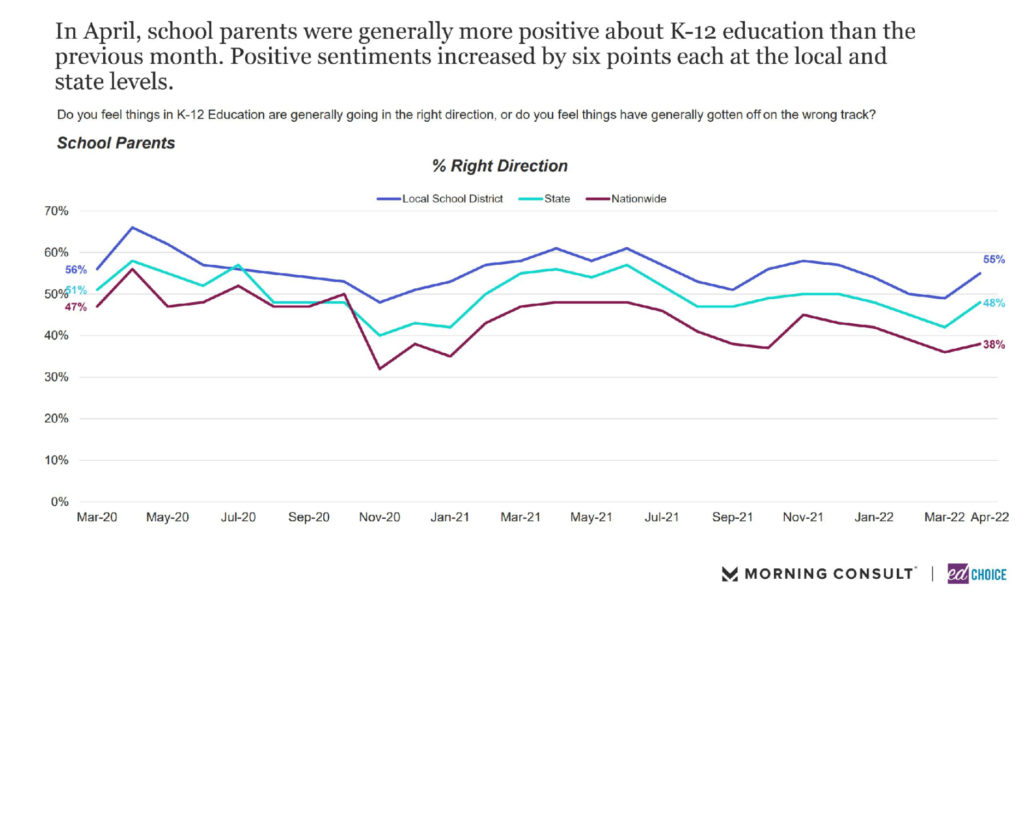
Visit the EdChoice Public Opinion Tracker site to access past questionnaires, and our national and state dashboards that are updated monthly. We also provide a more in-depth description of our research and survey methods.
Our K–12 education polls archive is updated on a rolling basis, roughly a few times each month. Please don’t hesitate to let us know if we are missing any surveys, or if there are accidental errors.




